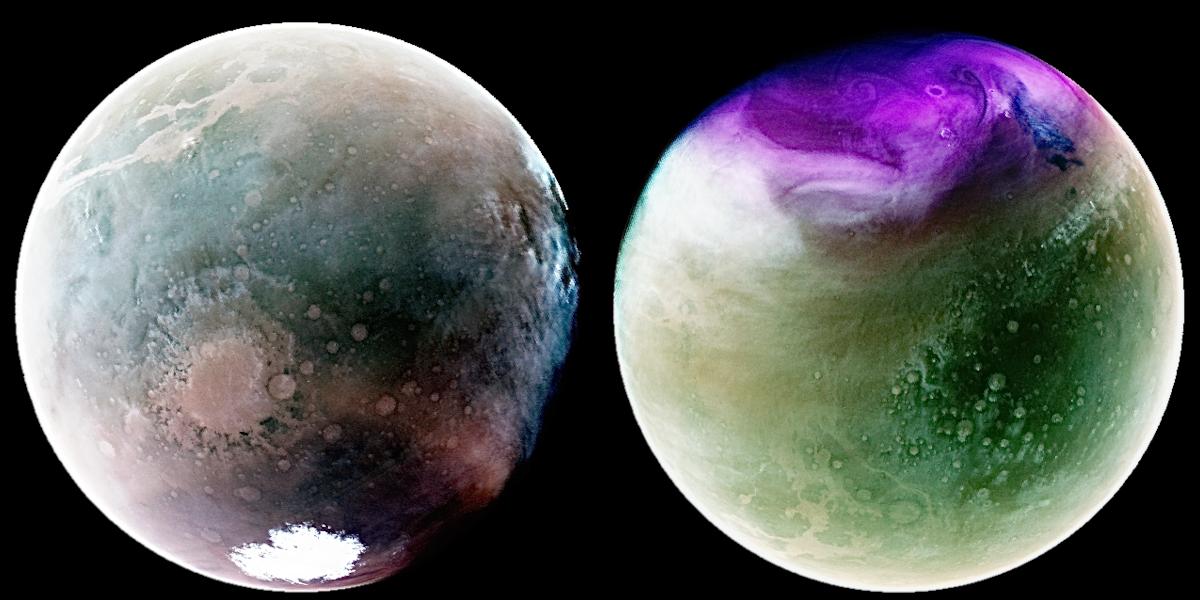2023年6月27日
MAVEN’s Ultraviolet Mars
Image Credit: MAVEN, Laboratory for Atmospheric and Space Physics, Univ. Colorado, NASA
Explanation: These two global views of Mars were captured at ultraviolet wavelengths, beyond the spectrum visible to human eyes. Recorded by the MAVEN spacecraft’s Imaging Ultraviolet Spectrograph instrument in July 2022 (left) and January 2023, three otherwise invisible ultraviolet bands are mapped into red, green, and blue colors. That color scheme presents the Red Planet’s surface features in shades of tan and green. Haze and clouds appear white or blue, while high altitude ozone takes on a dramatic purple hue. On the left, Mars’ south polar ice cap is in brilliant white at the bottom but shrinking during the southern hemisphere’s summer season. On the right, the northern hemisphere’s polar region is seen shrouded in clouds and atmospheric ozone. Known to some as the Mars Atmosphere and Volatile EvolutioN spacecraft, MAVEN has been exploring Mars’ tenuous upper atmosphere, ionosphere, and its interactions with the Sun and solar wind since 2014.
Tomorrow’s picture: star cloud
MAVEN的火星紫外影像
影像提供: MAVEN, Laboratory for Atmospheric and Space Physics, Univ. Colorado, NASA
说明: 这两幅火星的全球影像,摄于人眼不可见的紫外光波段。它们是由MAVEN航天器的成像紫外光谱仪,分别摄2022年7月及2023年1月,然后再把3个原本肉眼不可见的紫外波段映射成红、绿、蓝等3色。这种配色方式,把火星的表面特征以深浅不一的褐色及绿色予以呈现。火星的雾霾及云层呈白色或蓝色,而高空的臭氧则带着戏剧性的紫色阶。左侧火星下端的南极冰冠为亮白色,其范围在南极夏季期间会有缩减。在右侧的火星上,可见到北半球的极区笼罩着云层及大气中的臭氧。MAVEN全名为火星大气与挥发物演化航天器,自2014年以来,一直在探索火星稀薄的高层大气、电离层及其与太阳及太阳风的交互作用。
明日的图片: star cloud







